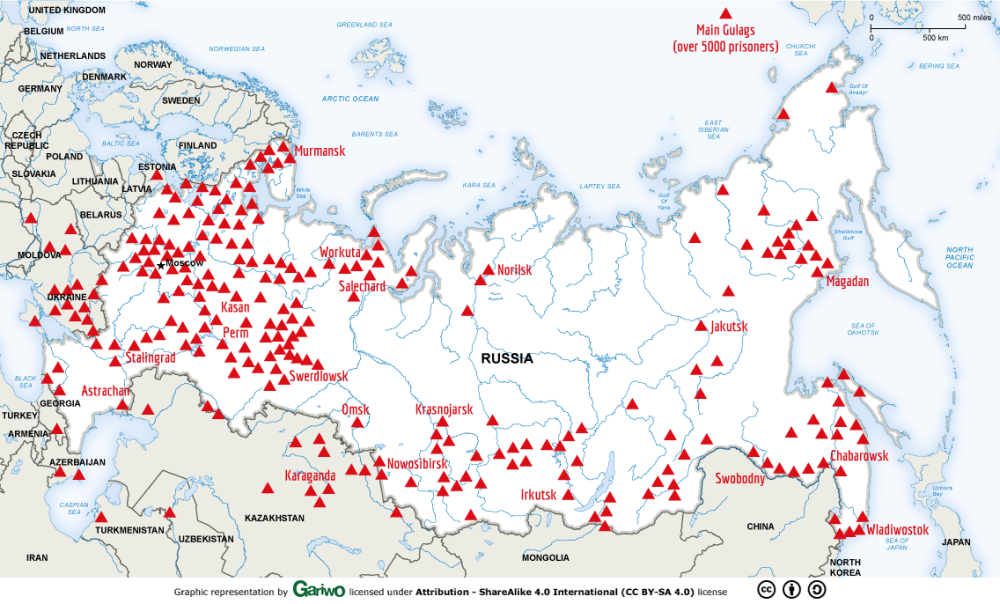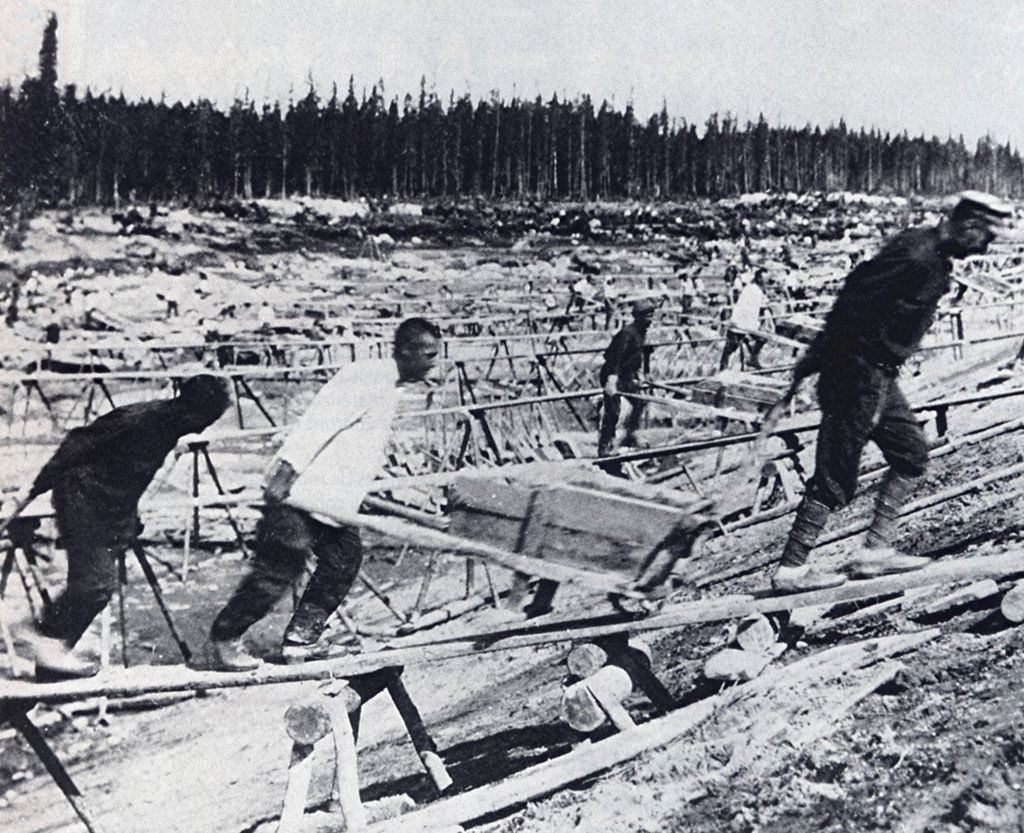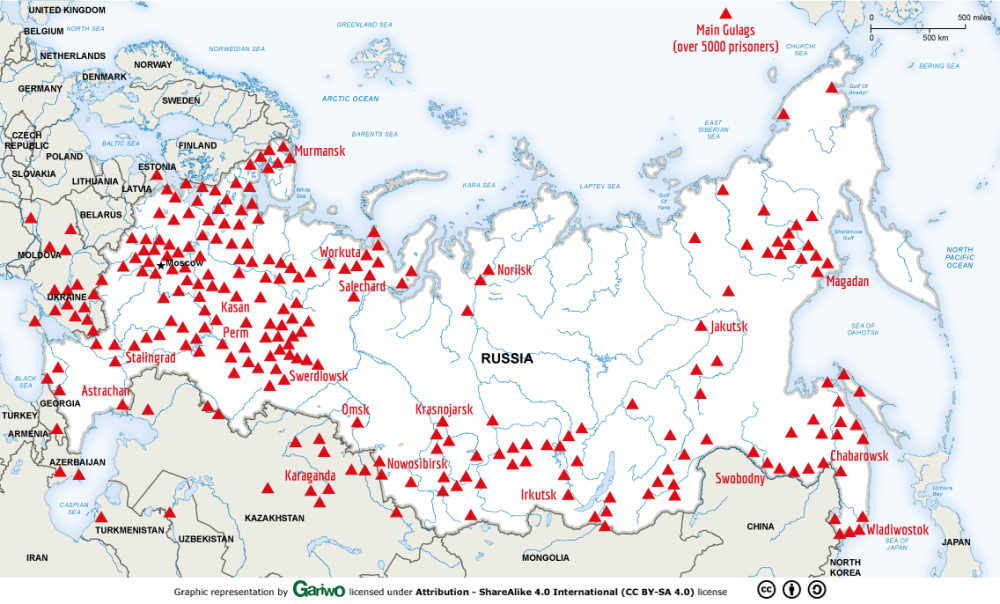Originally Authored at TheFederalist.com
Just after Christmas 50 years ago, the original Russian edition of the first two parts of The Gulag Archipelago was published, followed by French and English translations the next year. Aleksandr Solzhenitsyn dedicated his book “to all those who did not live to tell it.”
This was followed by second and third volumes in 1975 (parts three and four) and 1976 (parts five through seven), with corresponding translations in 1976 and 1978. Harper Collins publishes an authorized abridged edition.
My parents emigrated from the Soviet Union. From what they told me, I developed a deep reluctance to being frog-marched to Kolyma courtesy of unilateral disarmament peaceniks, who are nowadays called “woke” with alternate grievances but the same collectivist Borg mentality. With that mindset, I purchased copies of all three volumes as they became available and read them with curiosity and sorrow.
Unlike Gulag by Anne Applebaum (2004), Solzhenitsyn’s treatment does not present a comprehensive history of Soviet slave labor camps. Rather, it’s an anthology of vignettes, both firsthand and described by other former inmates, woven into a damning indictment of communism under Moscow’s dominion.
Frozen Apocalypse
Prior to Archipelago’s release, Americans and Western Europeans had been exposed to only glimpses of communist inhumanity, mostly from the few survivors who had escaped their dystopias by fortitude and fortune. But their voices were seldom heard, drowned out by a cacophony of Soviet apologists who insisted socialist coercion represented the ideal manner for ordering other people around. Central planning is benevolent, you see.
Solzhenitsyn tore the curtain away from this façade and forced the “progressive” elite to confront the ugly truth: Their prosperous socialist utopia was a cruel and barbaric sham. “Gulag” is a Russian acronym, for Glavnoye upravleniye lagereii i mest zaklyucheniya (Главное управление лагерей и мест заключения). It’s translated as General Authority on Internment and Detention.
These prisons and labor camps established across Russia, with a sprinkling in Ukraine and Kazakhstan, contained uncounted millions from the various ethnic “republics” of the Soviet Union. Solzhenitsyn employed the term “archipelago” as a metaphor for this collection of penal islands within a broad terra firma. Here, “enemies of the people” — those we might now call “deplorables” — could be punished for their alleged thought crimes, mostly under Art. 58, sec. 10 of the Russian Federation’s penal code.
These sites within the vast Soviet domain are expressed in the map from Gariwo below.

Vladimir Lenin as de facto head of the Communist (Bolshevik) Party in Russia began using terror to subdue the populace immediately after seizing power. He particularly used state-authorized secret police, with labor camps created in May 1918.
The first Soviet secret police was called by its initials, ChK in the Cyrillic alphabet. As the party’s policies transitioned under party secretary Iosif Stalin, this clandestine terror machine was followed by a scattered assignment of letters, including GPU, OGPU, NKGD, MGB, MVD, and finally KGB after Stalin’s death. Their tactics expanded into neighboring countries with Russian territorial acquisition.
Solzhenitsyn’s Life
Born in 1918, Solzhenitsyn studied mathematics at Rostov University. He served as an artillery captain in the Red Army, defending the country from the Nazi invasion during the Second World War. He was arrested in February 1945 for derogatory comments about Stalin in a private letter and sentenced to eight years in a Kazakhstan labor camp. Upon completing his sentence in March 1953, still in internal exile, he was belatedly treated for cancer in Tashkent.
In February 1956, Nikita Khrushchev delivered his “Personality Cult” speech to the Communist Party Congress. It implicitly criticized mass incarceration. In the aftermath, Solzhenitsyn was released from exile. During this period, he published a novella, One Day in the Life of Ivan Denisovich (1962) about life in the camps.
The Politburo deposed Khrushchev in October 1964, quashing the brief literary thaw. Solzhenitsyn continued writing, and a few of his novels were published in the West, notably Cancer Ward and The First Circle (both in 1968).
Solzhenitsyn labored quietly and clandestinely to compose The Gulag Archipelago from 1958 to 1967. These writings were based on his observations and testimonies from former prisoners in a magnum opus collection. He carefully maintained several copies, both internally and abroad, but because many of the people he interviewed remained alive and vulnerable, he declined to publish the contents. In the afterward, he apologizes for his inability to properly edit the materials because he didn’t dare assemble all the text in a single location where all of it could be confiscated.
Soviet authorities seized a hidden copy in late 1973, prompting Solzhenitsyn to publish a draft in safekeeping beyond the Iron Curtain. Deported from his homeland in February 1974 to (then West) Germany, he briefly sojourned in Switzerland before settling in Vermont.
Solzhenitsyn continued writing books, including Lenin in Zurich (1976) and a memoir, The Oak and the Calf (1981). In May 1994, he returned to Russia, noting the changes from his two decades of absence. He continued writing and died in Moscow in 2008.
First Volume
The first volume is divided into two parts: “I The Prison Industry” and “II Perpetual Motion.” These describe the Communist Party’s terror organizations, the prisons with their wardens and psychological toll on inmates, the quasi-legal tropes used to justify arrest and torture, and the logistics of transporting prisoners from prisons to camps.
In part I’s fourth chapter, Solzhenitsyn encourages humility about human vulnerability to evil. “If only there were evil people somewhere insidiously committing evil deeds, and it were necessary only to separate them from the rest of us and destroy them. But the line dividing good and evil cuts through the heart of every human being. And who is willing to destroy a piece of his own heart?”
In the fifth chapter, another comment resonated with me: “I had grown up among engineers, and I could remember the engineers of the twenties very well indeed: their open, shining intellects, their free and gentle humor, their agility and breadth of thought, the ease with which they shifted from one engineering field to another, and, for that matter, from technology to social concerns and art. Then, too, they personified good manners and delicacy of taste; well-bred speech that flowed evenly and was free of uncultured words; one of them might play a musical instrument, another dabble in painting; and their faces always bore a spiritual imprint.” (STEM types on our side are a tad more plebeian.) What happened to them? They got replaced.
Archipelago doesn’t address the communist purges directly. Those decimated more privileged members of society, especially party members. This thinned the ranks of technical specialists and senior military officers. Back in 1975 during a Soviet exhibition, I purchased a booklet, Rocket Engines GDL-OKB, by Valentin Glushko. Of the 10 men it mentions who were born between 1893 and 1907, fully half died in the 1930s — implicitly casualties of the prewar liquidation.
Another 17 men whose photographs were taken during their prime had no dates identified. This suggests additional victims of state paranoia. Whether these engineers and technicians were summarily executed or worked to death remains unknown.
Second Volume
Volume two is also divided into two parts: “III The Destructive-Labor Camps” and “IV Soul & Barbed Wire.” These chapters describe conditions in the labor camps, especially the backbreaking labor to dig the White Sea Canal in 1931-33. The photograph below illustrates the wretched working conditions.

The unrelenting recitation of tragic stories can be numbing. Nonetheless, one recounted in part III’s 10th chapter stood out regarding one woman’s arrest and detention.
Grusha … committed a crime of simply astounding gravity. She worked at a glass factory for twenty-three years and her neighbors had never seen an icon in her home. But just before the [invading] Germans got to her district she did put up some icons. … Then, too, she had picked up near her house a pretty German leaflet with a picture and pushed it into the vase on her dresser. And despite all this our humane court, taking into consideration her proletarian origins, gave Grusha only eight years of camp and three years of disenfranchisement. Meanwhile, her husband perished at the front. And her daughter was a student in the technological institute, but the cadres kept tormenting her: ‘Where is your mother?’ And the girl poisoned herself. (Grusha could never get past the point of her daughter’s death in telling her story. She sobbed and went out.)
Solzhenitsyn segues to courage in the third chapter: “Every act of resistance to the government required heroism quite out of proportion to the magnitude of the act. It was safer to keep dynamite during the rule of Alexander II than it was to shelter the orphan of an enemy of the people under Stalin. Nonetheless, how many such children were taken in and saved.”
Third Volume
Volume three is divided into three parts: “V Katorga,” “VI Exile,” and “VII Stalin Is No More.” These chapters explain the transition of penal labor (katorga) from Tsarist rule to the Soviet version as well as the occasional resistance and escape.
One meeting in part V’s 11th chapter erupted into confrontation:
One of the foremen, T., rose and spoke slowly, almost inarticulately, whether because that was natural to him or because he was extremely agitated. ‘I used to agree … when other prisoners said … we live … ·like dogs …’ The brute in the presidium bristled. T. kneaded the cap in his hands, an ugly crop-headed convict, his coarsened features contorted by his struggle to find the right words. ‘But now 1 see that 1 was wrong …’ The brute’s face cleared. ‘We live-much worse than dogs,’ T. rapped out with sudden emphasis, and all the foremen sat bolt upright. ‘A dog has only one number on his collar; we have four. Dogs are fed on meat; we’re fed on fishbones. A dog doesn’t get put in the cooler! A dog doesn’t get shot at from watchtowers! Dogs don’t get twenty-fivers pinned on them!’ They could interrupt whenever they liked now — he had said all that mattered.
In part VII’s third chapter, Solzhenitsyn excoriates apologists for Soviet misrule: “All you freedom-loving ‘left-wing’ thinkers in the West! … As far as you are concerned, this whole book of mine is a waste of effort. You may suddenly understand it all someday — but only when you yourselves hear ‘hands behind your backs there!’ and step ashore on our Archipelago.” He knew his disclosures would meet that era’s version of cancel culture.
Reception
American and European intelligentsia dismissed testimonies of Russia’s socialist utopia. Can’t make an omelet without breaking a few eggs. (Among all the eggshells, where’s the omelet?)
In 1978 following Archipelago’s publication, at Harvard University Solzhenitsyn excoriating Western leaders: “A decline in courage may be the most striking feature which an outside observer notices in the West in our days. … Such a decline in courage is particularly noticeable among the ruling groups and the intellectual elite, causing an impression of loss of courage by the entire society. Of course, there are many courageous individuals, but they have no determining influence on public life.”
In 2004, the late Joseph Ratzinger (the future Pope Benedict XVI) lamented that even after the fall of the Berlin Wall “how little was said about the horrors of the Communist Gulag, how isolated Solzhenitsyn’s voice remained. … It was about justice for all, about peace, about doing away with unfair master-servant relationships, and so on. Marxism believed that it had to dispense with ethical principles for the time being and that it was allowed to use terror as a beneficial means to these noble ends. Once the resulting human devastation became visible, even for a moment, the former ideologues preferred to retreat to a pragmatic position or else declared quite openly their contempt for ethics.”
Jesus condemns this human lack of perception in comparing motes and logs (Matt. 7:3-5). We refuse to recognize evil and hence are paralyzed to confront its manifestations when they arise. That deficit can and often does result in massively deadly consequences.
The will to dominate runs deep in the human psyche. Archipelago reminds us such despotic cruelty became commonplace in living memory with few held accountable.
Moreover, such atrocities continue today behind barbed wire in western China, North Korea, and elsewhere on the globe. Solzhenitsyn warns us all of the consequences should resistance to totalitarianism fail.
G. W. Thielman has bachelor’s and master’s degrees in engineering. He is currently employed as a patent attorney, and lives in Fredericksburg, Virginia. His opinions are his own.
